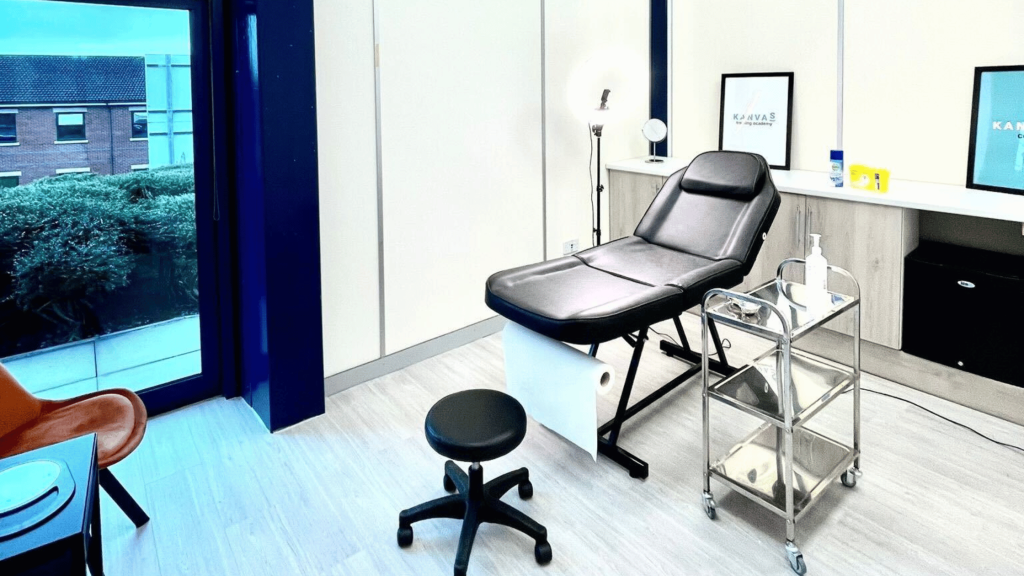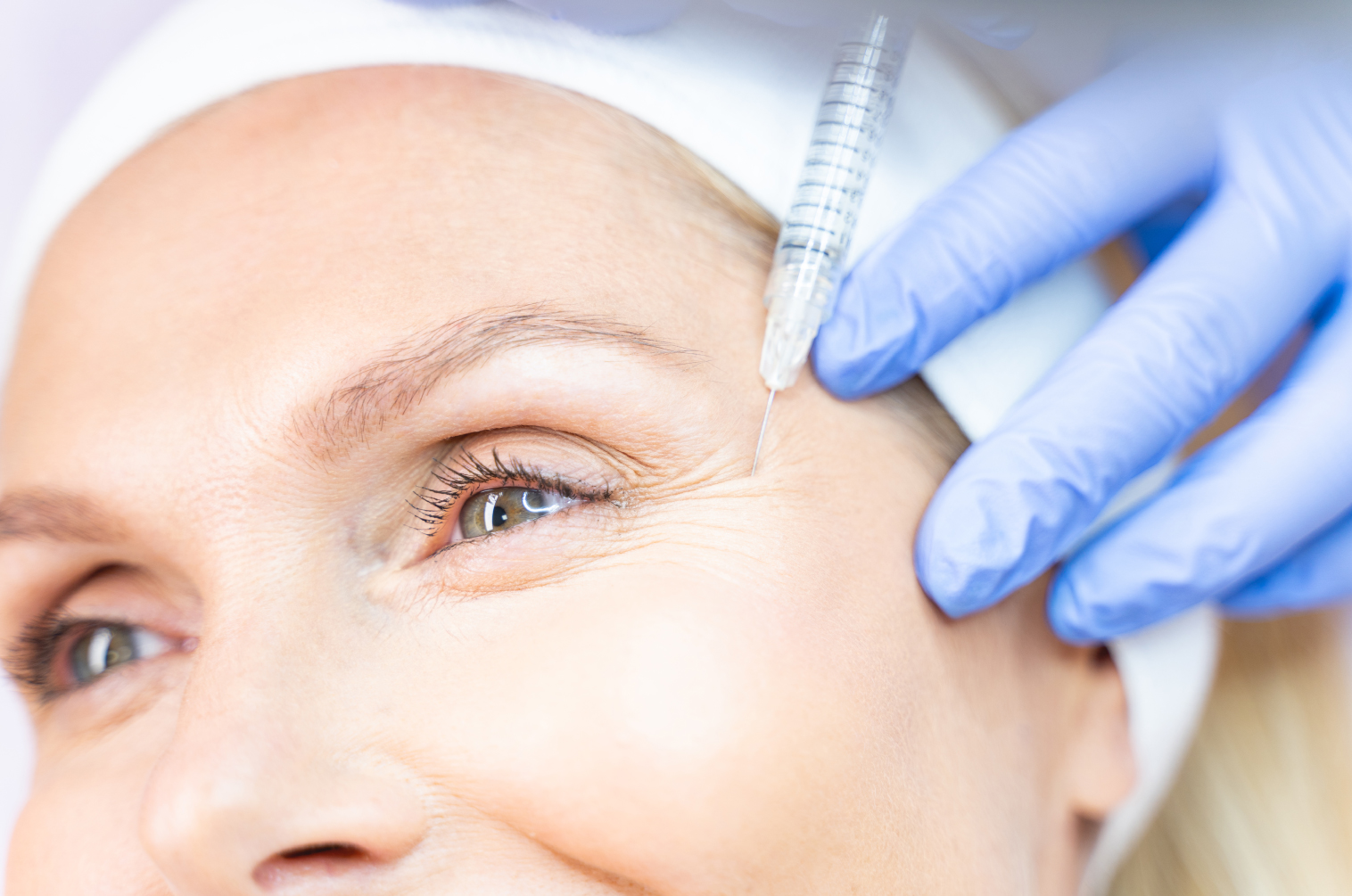Understanding the Clinically Essential Treatments Readily Available at Aesthetic Clinics
Visual clinics play a critical function in dealing with both cosmetic and health-related problems. They use clinically essential treatments that prolong past simple appearance enhancements - Skin booster treatment Malaysia. Therapies such as laser treatment and chemical peels can considerably enhance skin disease while promoting overall well-being. The performance of these procedures pivots on understanding their clinical implications and the nuances of individual client demands. What elements should one consider before deciding for these treatments?
The Role of Aesthetic Clinics in Modern Healthcare
As aesthetic clinics remain to gain prominence in modern-day health care, they offer not just aesthetic objectives but likewise address various clinical requirements. These facilities often give therapies that surpass beauty enhancements, integrating treatments that can improve general health and wellness and health. For instance, aesthetic clinics may supply services such as laser therapy for skin-related problems, which can alleviate symptoms of skin conditions like psoriasis or eczema. Furthermore, the combination of sophisticated innovations makes it possible for these clinics to supply minimally invasive treatments that promote healing and reduce downtime for people.
Skin Restoration Treatments: Even More Than Simply Aesthetics
Skin rejuvenation treatments incorporate a series of treatments developed to enhance the appearance and health of the skin, usually dealing with hidden clinical concerns. These therapies include procedures such as chemical peels, microdermabrasion, and laser treatments, which intend to boost skin appearance, tone, and flexibility. By stimulating collagen manufacturing and promoting cell turnover, these treatments can reduce the impacts of aging, sunlight damages, and ecological stress factors.
In enhancement to visual improvements, skin restoration therapies can additionally have substantial psychological benefits. Clients frequently report boosted self-esteem and self-confidence complying with successful therapies. In addition, some therapies can help ease problems like hyperpigmentation or uneven skin texture, which might add to psychological distress.

Treatments for Chronic Skin Conditions
Chronic skin disease, which can significantly impact an individual's top quality of life, often call for targeted treatments to manage signs and symptoms and enhance overall skin health. Visual centers provide different medically necessary procedures tailored to address these issues, consisting of psoriasis, eczema, and acne.
Topical therapies, such as corticosteroids or retinoids, are generally recommended to reduce swelling and advertise recovery. In extra extreme situations, systemic treatments, including biologics, might be made use of to target hidden immune reactions. Additionally, light and laser treatments have actually revealed efficiency in dealing with conditions like rosacea and acne scars, giving people with alleviation and enhanced skin appearance.
Furthermore, chemical peels and microdermabrasion can aid in scrubing damaged skin, enhancing the skin's structure and tone. By utilizing a complete technique, aesthetic clinics play a vital role in managing persistent skin problem, aiding people restore their self-confidence and boost their total wellness.
The Connection Between Mental Health And Wellness and Aesthetic Procedures
How does the pursuit of visual procedures link with psychological health? Study shows a substantial link in between a person's self-image and their psychological wellness. Lots of people seek aesthetic procedures to improve their look, believing that renovations may bring about boosted self-confidence and a much better lifestyle. Sometimes, these procedures can ease symptoms of stress and anxiety and depression connected to body picture issues.
It is necessary to recognize that while aesthetic enhancements can provide short-term alleviation, they may not attend to underlying mental issues. The wish for physical adjustment can in some cases mask much deeper psychological health and wellness issues that need expert intervention. Consequently, aesthetic clinics frequently highlight the importance of mental health and wellness analyses prior to waging any kind of treatment. Comprehending the mental motivations behind these wishes is vital for delivering alternative care that appreciates both physical and mental health and wellness needs.
Minimally Invasive Procedures With Medical Advantages
What are the benefits of minimally intrusive procedures beyond visual improvements? These procedures commonly give substantial medical benefits while reducing recovery time and minimizing problems. Treatments like Botox can alleviate migraines and too much sweating, offering patients relief from persistent problems. In addition, facial fillers can assist restore volume and boost the appearance of scars, thereby improving skin health.
Minimally invasive techniques such as laser treatment can deal with various skin conditions, including acne scars and coloring concerns, promoting general skin health and wellness. The accuracy of these treatments lowers the danger of infection and difficulties contrasted to typical surgery, enabling check my blog people to resume daily activities rapidly.
The emotional benefits, such as boosted self-confidence and confidence, can contribute positively to a client's total well-being. To sum up, minimally invasive procedures serve dual functions: improving aesthetic allure and addressing underlying clinical concerns properly.
The Value of Specialist Assessment
Several people might seek aesthetic treatments for cosmetic factors, the relevance of expert assessment can not be overemphasized. Expert appointments offer as a critical initial step in examining the patient's special requirements, case history, and preferred end results. A competent specialist can provide valuable insights into which treatments may appropriate and needed, making certain that clients make educated decisions.
In addition, assessments assist to recognize potential risks and contraindications linked with different therapies. This preemptive step permits a customized approach to care, improving security and efficiency.
In addition, expert consultations promote a trusting relationship between the person and supplier, motivating open interaction about assumptions and concerns. This rapport adds to higher contentment rates and better adherence to post-procedure treatment guidelines. As a result, investing time in an extensive assessment is essential for attaining ideal results and guaranteeing that the selected aesthetic treatment straightens with the patient's health and wellness and wellness objectives.
Individual Endorsements: Real-Life Effect of Clinically Required Procedures

Transformative Success Stories
Just how do clinically necessary treatments genuinely transform lives? Patients at aesthetic clinics typically share engaging narratives that highlight profound modifications arising from these interventions. One individual, previously burdened by serious skin problems, reported boosted self-esteem and social engagement adhering to successful therapies. An additional person, dealing with chronic discomfort due to an architectural a dermatologist problem, experienced substantial relief and gained back mobility, enabling a much more energetic way of life. Furthermore, testimonials disclose changes past physical appearance; one client noted improved mental wellness after dealing with an enduring problem that influenced their self-confidence. These stories highlight the essential duty that clinically needed procedures play in boosting overall well-being, showcasing their capability to foster not just physical recovery yet likewise emotional and mental rejuvenation.
Overcoming Individual Obstacles
Success tales from people at aesthetic clinics disclose profound changes, but the journey often encompasses conquering substantial individual obstacles. Several individuals confront deep-seated instabilities, stemming from terrible experiences or medical problems that have influenced their self-worth. As an example, one client shared how a rehabilitative procedure not only boosted their physical appearance yet likewise reduced years of anxiousness and social withdrawal. Another testimony highlighted the psychological toll of persistent skin concerns, where therapy brought about newfound confidence and a renewed social life. These stories show that medically needed treatments offer not just to enhance physical wellness yet likewise to resolve mental worries, permitting patients to reclaim their lives and accept their true selves with restored vitality.
Often Asked Concerns
What Credentials Should I Seek in Aesthetic Clinics?

Just How Can I Figure Out if a Procedure Is Clinically Required?
To figure out if a treatment is clinically required, one ought to talk to a certified health care specialist. They can assess the person's problem, review possible advantages, and warranty that the procedure aligns with established clinical guidelines.
Are There Risks Connected With Aesthetic Medical Procedures?
Dangers associated with visual clinical procedures include infection, scarring, allergic responses, and discontentment with outcomes. People must completely go over potential complications with qualified specialists to make enlightened decisions regarding their treatment choices and total health.
Will My Insurance Policy Cover Medically Essential Aesthetic Therapies?
Insurance policy insurance coverage for medically required visual treatments differs substantially. Individuals need do dermatologist to consult their insurance providers to figure out details plan information, including qualification standards, needed paperwork, and potential out-of-pocket expenditures connected with these treatments.
How much time Is the Recuperation Time for These Treatments?
The healing time for clinically needed procedures varies substantially, commonly ranging from a few days to a number of weeks. Aspects influencing this period include the specific treatment, individual recovery rates, and adherence to post-operative care guidelines.